Top 51 Must-Ask AWS Interview Questions and Detailed Answers
To help you thoroughly prepare for your next AWS interview, we've compiled a comprehensive guide with the Top 51 Must-Ask AWS Interview Questions and Detailed Answers. These questions range from basic to advanced, suitable for candidates with varying levels of experience.
Question 1: What is AWS and why is it so widely used?

Amazon Web Services (AWS) is a comprehensive cloud computing platform provided by Amazon. It offers a wide range of services, including computing power, storage options, networking, databases, machine learning, analytics, and more.
AWS has the function to deploy and manage applications, store data, and scale infrastructure without having to invest in expensive physical hardware.
AWS also supplies over 200 services, from computing to machine learning, catering to a variety of business needs. With advanced security features and compliance certifications, AWS is trusted for handling sensitive data. Additionally, its reliable, fault-tolerant infrastructure ensures consistent uptime and performance for critical applications.
Question 2: Can you explain the key components of AWS?
The key components of AWS (Amazon Web Services) are essential services and features that form the foundation of its cloud platform. Here are the primary components:
Compute (EC2): Amazon Elastic Compute Cloud (EC2) provides scalable virtual servers, known as instances, which can run various applications. Users can choose instance types based on computing power, memory, and storage needs.
Storage (S3): Amazon Simple Storage Service (S3) is an object storage service with the mission to store and retrieve large amounts of data. S3 is scalable, durable, and commonly used for backups, data archiving, and hosting web content.
Database (RDS, DynamoDB): AWS offers both relational (RDS) and NoSQL (DynamoDB) database services. Amazon RDS supports traditional databases like MySQL, PostgreSQL, and Oracle. While DynamoDB is a fully managed NoSQL service designed for fast, scalable access to non-relational data.
Networking (VPC): Users can use Amazon Virtual Private Cloud (VPC) to create a private, isolated section of AWS for networking. Users define IP ranges, subnets, route tables, and security groups to control traffic and securely connect AWS resources to the internet.
Content Delivery (CloudFront): Amazon CloudFront is a content delivery network (CDN) that supports delivering web content (like images, videos, and APIs) to users with low latency by caching it at global edge locations.
Identity and Access Management (IAM): By having AWS IAM, users manage and control access to AWS services securely.
Monitoring and Logging (CloudWatch): Amazon CloudWatch monitors AWS resources and applications in real-time. It collects, tracks metrics, sets alarms, and logs performance data to help with operational insights and troubleshooting.
Serverless (Lambda): AWS Lambda is a serverless computing service that lets users run code without provisioning or managing servers. It automatically scales and handles everything from running code to managing underlying resources.
Security and Compliance: AWS has services like AWS Shield (DDoS protection), AWS WAF (Web Application Firewall), and AWS KMS (Key Management Service) to help users secure their applications and comply with industry regulations.
Deployment and Management (CloudFormation, Elastic Beanstalk): CloudFormation for infrastructure as code (IaC) and Elastic Beanstalk for easy deployment and management of applications without managing the underlying infrastructure.
Question 3: What Is Elastic Load Balancing (ELB)?
Elastic Load Balancing (ELB) is an AWS service that automatically distributes incoming traffic across multiple computing resources, such as EC2 instances, containers, and IP addresses. Its primary purpose is to improve application reliability and performance by balancing the load.
Question 4: How Does Elastic Load Balancing (ELB) Function?
Elastic Load Balancing (ELB) works across multiple availability zones to maintain uptime and scales automatically as traffic increases. There are three types of load balancers: Application Load Balancer (ALB) for HTTP/HTTPS traffic, Network Load Balancer (NLB) for high-performance TCP/UDP traffic, and Gateway Load Balancer (GWLB) for routing through virtual appliances.
Question 5: What is EC2?
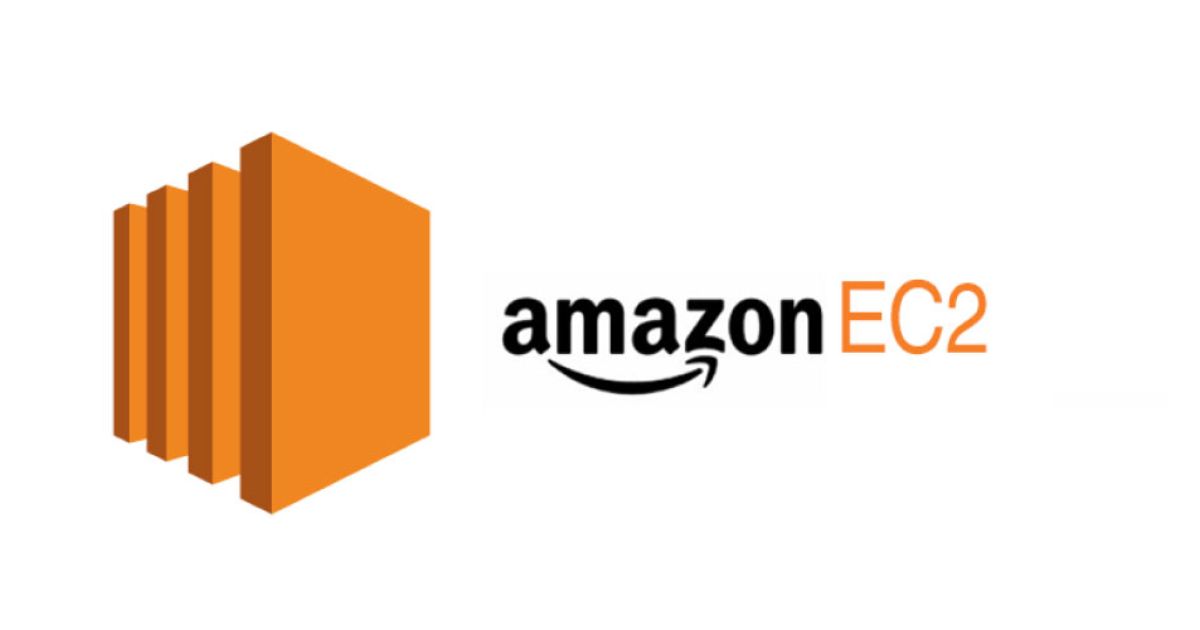
Amazon EC2 (Elastic Compute Cloud) is a web service. You can use it to have scalable virtual servers in the cloud, and users can run applications on a variety of operating systems.
Question 6: When should you use EC2?
When to Use EC2:
Scalability: When you need to scale computing resources up or down based on demand, especially for applications with varying workloads or unpredictable traffic spikes.
Custom Configuration: When you require full control over the server, including choosing the operating system, configuring software, and managing security settings.
Cost-Efficiency: For workloads where a pay-as-you-go pricing model is advantageous, reducing costs by only paying for the computing power you use.
Variety of Workloads: EC2 is ideal for running a wide range of applications - web servers, databases, machine learning models, and data processing tasks.
Flexibility: When you need a choice of instance types with different compute, memory, and storage configurations to optimize performance for specific workloads.
Question 7: What is S3?
Amazon S3 (Simple Storage Service) is a scalable, high-speed, web-based cloud storage service. It is designed for storing and retrieving any amount of data from anywhere on the internet. It is commonly used for backup, archiving, data lakes, hosting static websites, and serving content like images, videos, and other assets.
S3 has a simple interface, users easily store objects (files) in "buckets" (containers) and manage access, permissions, data lifecycle.
Question 8: How do you manage data in S3?
You can organize your data into buckets or objects, control access through policies and ACLs, take advantage of features like versioning, lifecycle rules, replication, and encryption to manage your data efficiently. It is suitable for a wide range of use cases, from data backup to content delivery.
Question 9: What is Lambda in AWS?
AWS Lambda is a serverless computing service. You simply write your code, set up an event trigger, and Lambda takes care of the rest, including running, scaling, and maintaining the environment. It's a fully managed service, so you don’t have to worry about infrastructure management, patching, or scaling — AWS handles it automatically. You only pay for the compute time your code consumes, measured in milliseconds, and for the number of requests.
Question 10: What is API Gateway?
An API Gateway is a server that acts as an intermediary between clients and backend services, handling all API requests from clients, routing them to the appropriate services, and aggregating responses. It offers a single entry point for external systems to communicate with various microservices or backend systems. API Gateway has features like request routing, load balancing, security (authentication and authorization), rate limiting, and data transformation.
Question 11: When should you use API Gateway?
You should use an API Gateway when you have a microservices architecture or multiple backend services. You need to simplify and centralize communication between clients and these services. It's especially beneficial when you want to offload concerns like security, traffic management, and monitoring from individual services to a dedicated gateway, streamlining client-service interactions and enhancing performance, scalability, security.
Question 12: What do you understand about the basic structure of AWS IAM?
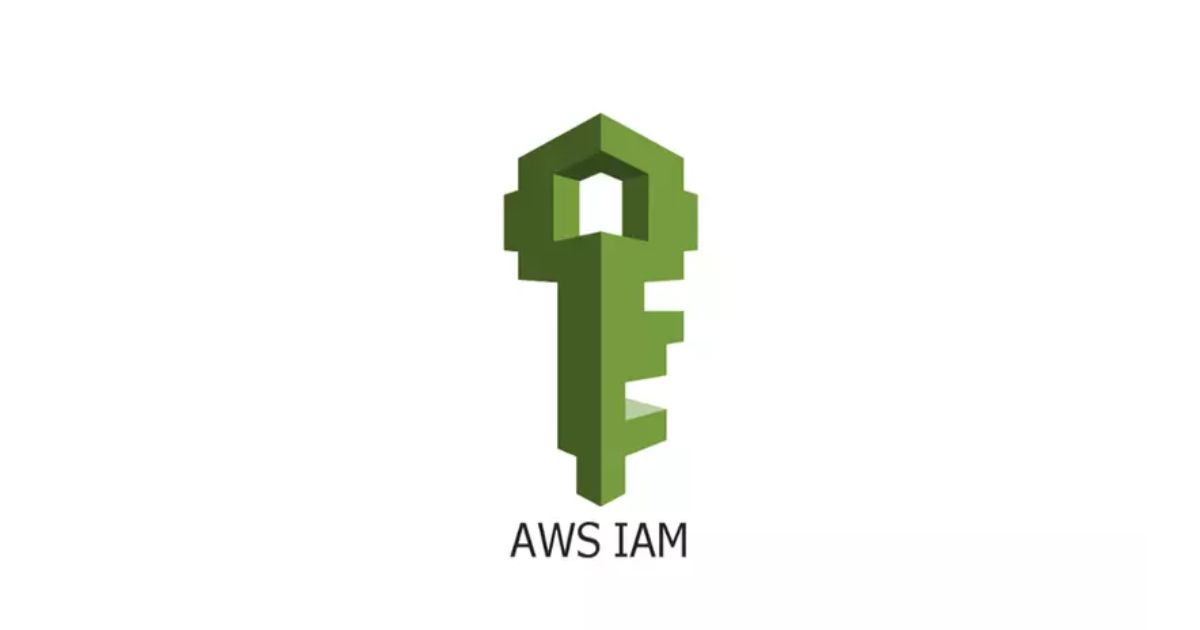
AWS Identity and Access Management (IAM) is a service that enables you to securely control access to AWS resources. Using it, you manage who can authenticate (sign in) and who has authorization (permissions) to use specific AWS services and resources. IAM is critical for enforcing security so only the right individuals or services have access to resources at the appropriate level.
Question 13: Can you explain the basic structure of AWS IAM?
The basic structure of AWS IAM consists of the following components:
Users: These are individuals or entities that need to access AWS resources. They can be human users, applications, or other services.
Groups: Groups are collections of users. You can assign policies to groups, making it easier to manage permissions for multiple users.
Roles: Roles are similar to groups but are based on permissions required for a specific task or job function. They are often used for temporary access or for services that need to assume different roles.
Policies: Policies define the permissions that users or groups have to access AWS resources. They can be attached to users, groups, or roles.
Identity Providers (IDPs): You can integrate AWS IAM with external identity providers like Active Directory or SAML to enable single sign-on (SSO).
Question 14: How do you manage access control with IAM Roles and Policies?
Managing access control with IAM Roles and Policies involves defining who can access specific AWS resources and what actions they can perform. Here’s how it works:
Assigning Roles: When you assign a role to an entity (like an EC2 instance), it doesn’t have direct permissions itself but assumes the permissions defined by the role’s policy. This allows the entity to interact with specific AWS services (e.g., read from an S3 bucket or write to a DynamoDB table) securely.
Least Privilege: The key to managing access control is the principle of least privilege, which ensures that users, groups, and services only have the permissions they need to perform their tasks. You define policies with minimal permissions required to carry out a job.
Fine-grained control: By attaching specific policies to roles and ensuring that only trusted entities can assume those roles, you can control exactly who or what has access to AWS resources, ensuring security and reducing the risk of unauthorized access.
In summary, IAM roles manage who or what can access resources, and policies define the exact permissions for that access, allowing for secure, scalable, and controlled access to AWS resources.
Question 15: How Do You Troubleshoot Performance Issues In an AWS Environment?
To troubleshoot performance issues in an AWS environment, follow the approach:
Monitor Metrics: Use CloudWatch to track key metrics like CPU, memory, and network usage. Set up CloudWatch Alarms for threshold breaches.
Analyze Logs: Check CloudWatch Logs and VPC Flow Logs for errors or unusual activity that may indicate performance problems.
Resource Utilization: Review EC2 and RDS instances for under- or over-provisioning. Adjust instance types or use Auto Scaling to handle load fluctuations.
Auto Scaling and Load Balancing: Ensure Auto Scaling is set up correctly and that Elastic Load Balancer (ELB) is distributing traffic effectively.
Network and Latency: Use AWS X-Ray to trace service requests and identify latency bottlenecks. Check VPC configurations and Route 53 DNS settings for network issues.
Service Quotas: Verify that you haven’t hit any AWS service limits (e.g., EC2, RDS, API requests) and request increases if needed.
Storage/Database Performance: Optimize EBS volumes and RDS/DynamoDB for high IOPS or use read replicas to handle high loads.
Application Optimization: Review application logs, optimize database queries, and implement caching with ElastiCache or CloudFront.
Use AWS Tools: Utilize AWS Trusted Advisor for recommendations and AWS X-Ray for distributed tracing of performance issues.
Load Testing: Regularly load test using tools like JMeter to simulate traffic and identify potential bottlenecks.
Question 16: What do you understand by AWS Regions and Availability Zones?
AWS Regions and Availability Zones (AZs) are core components of AWS’s global infrastructure. They are designed to provide scalable, resilient, and high-performance services.
AWS Regions: These are geographically separated locations that consist of multiple isolated data centers. Each region operates independently and is fully isolated from other regions. When choosing a region, users consider factors like latency, regulatory requirements, and cost. Examples of AWS regions include us-east-1 (North Virginia) and eu-west-1 (Ireland).
Availability Zones (AZs): Within each region, there are multiple Availability Zones. AZs are physically separated data centers with independent power, cooling, and networking, but they are interconnected through low-latency networks. If one AZ goes down, services in other AZs can continue operating.
Question 17: What is a Spot Instance?
A Spot Instance is an Amazon EC2 pricing model that permits you to bid on unused EC2 capacity at a significant discount compared to On-Demand pricing. Spot Instances are available at a lower cost but can be interrupted by AWS when the demand for EC2 capacity increases, with only a two-minute warning before termination.
Question 18: When would you use a Spot Instance?
When to Use Spot Instances:
Cost Savings: Spot Instances are ideal for workloads that are flexible in terms of execution time and can handle interruptions, providing up to 90% savings over On-Demand pricing.
Fault-Tolerant Applications: Use Spot Instances for workloads that can be distributed across multiple instances or can resume processing after interruption, such as Batch processing, Big data analytics, Rendering jobs, Stateless applications.
Flexible Workloads: Spot Instances are great for tasks like machine learning model training, CI/CD pipelines, or other time-insensitive processes that benefit from cost efficiency but don’t require uninterrupted runtime.
While Spot Instances offer great savings, they should be used for workloads that can tolerate interruptions and have the flexibility to be paused or restarted.
Question 19: How do you configure Auto Scaling for EC2 instances?
To configure Auto Scaling for EC2 instances, follow these steps:
Step 1 - Launch Template/Configuration: Create a Launch Template or Launch Configuration specifying instance details like AMI, instance type, and security groups. Launch templates support versioning, unlike launch configurations.
Step 2 - Auto Scaling Group: Define the Auto Scaling Group with minimum, maximum, and desired instance counts. Choose Availability Zones for fault tolerance.
Step 3 - Scaling Policies: Set Dynamic Scaling based on CloudWatch metrics (e.g., CPU usage) or use Scheduled Scaling for time-based adjustments. Predictive Scaling automatically forecasts and adjusts resources based on demand.
Step 4 - Load Balancer (Optional): Attach an Elastic Load Balancer (ELB) to distribute traffic across instances and improve fault tolerance.
Step 5 - Monitoring & Alerts: Set up CloudWatch Alarms to trigger scaling actions based on metrics and configure notifications for scaling events.
Question 20: What’s the difference between EC2 and Lambda?
The key difference between EC2 and Lambda lies in how they manage infrastructure and execute applications:
Amazon EC2 (Elastic Compute Cloud): EC2 has virtual machines (instances) where you have full control over the operating system, configurations, and installed software. You are responsible for managing the servers. You can scale, update, and resource provisioning. EC2 is ideal for applications that need long-running processes, custom server configurations, or direct control over the computing environment.
AWS Lambda: Lambda is a serverless computing service where you don’t manage infrastructure. You simply upload your code. AWS automatically provisions the compute resources, scales as needed, and only charges you for the actual execution time. Lambda is best for event-driven applications, short-lived tasks, or microservices that need to scale automatically without server management.
Question 21: When would you use Elastic Beanstalk over EC2?
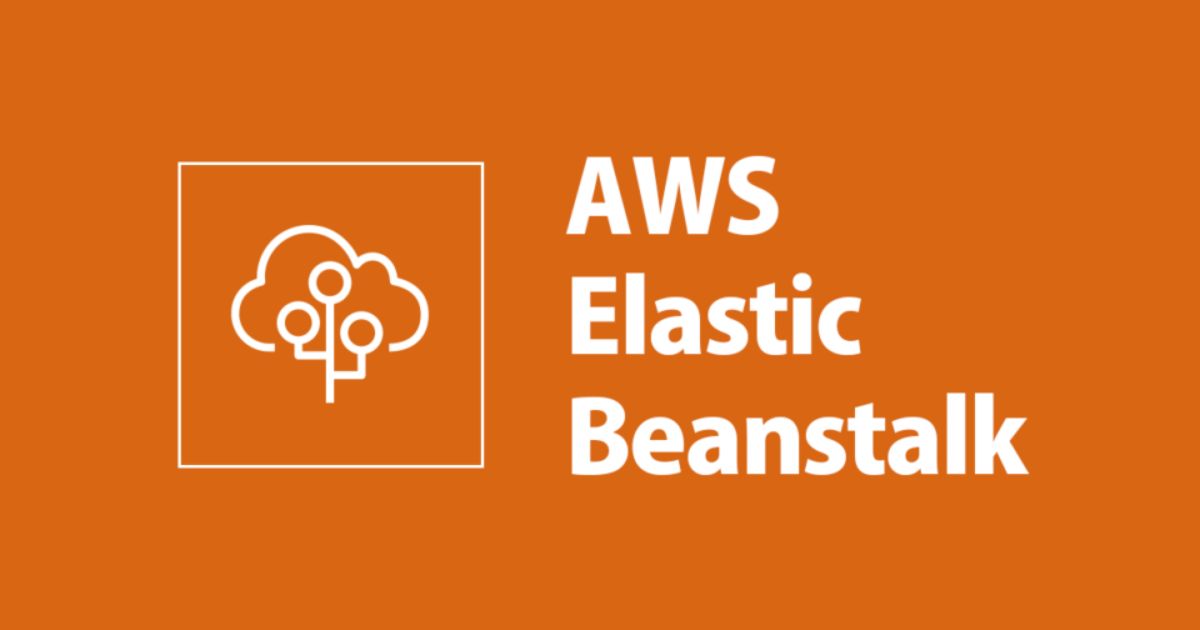
You would use Elastic Beanstalk over EC2 when you want to deploy and manage applications without worrying about the underlying infrastructure. Elastic Beanstalk is a Platform as a Service (PaaS) solution that automatically handles the deployment, scaling, and management of your application. So, it helps you focus on writing code.
Question 22: What are the different storage classes in S3, and when would you use them?
Amazon S3 supplies various storage classes to optimize cost and performance for different data needs:
S3 Standard: Best for frequently accessed data with high availability and low latency. You should use it for websites, apps, or content delivery.
S3 Intelligent-Tiering: Automatically moves data between frequent and infrequent access tiers. Use for data with unpredictable access patterns to minimize costs.
S3 Standard-IA: For infrequently accessed data that still requires rapid retrieval. Suitable for backups or long-term storage where data is accessed occasionally.
S3 One Zone-IA: Cheaper than Standard-IA but stores data in one availability zone, making it ideal for less critical data that can be easily recreated.
S3 Glacier: For long-term archival with infrequent access. Retrieval times range from minutes to hours. The best application is compliance or legal records.
S3 Glacier Deep Archive: Lowest-cost option with retrieval times up to 12 hours. Perfect for data you rarely access but need to retain for regulatory purposes.
Choose based on access frequency and cost needs: Standard for frequent access, Intelligent-Tiering for unpredictable patterns, IA for infrequent access, and Glacier for long-term storage.
Question 23: How do you secure data in S3?
Several best practices to secure data in Amazon S3 (Simple Storage Service):
Encryption: Use Server-Side Encryption (SSE) options like SSE-S3, SSE-KMS, or manage your own keys with SSE-C. For additional control, use Client-Side Encryption.
Access Control: Implement IAM roles, bucket policies, and access control lists (ACLs) to manage permissions. Use Multi-Factor Authentication (MFA) for sensitive operations.
Restrict Public Access: Block public access by default and regularly audit your buckets to avoid accidental exposure.
Monitoring: Enable S3 Access Logs, AWS CloudTrail, and AWS Config to track and audit all activities.
Network and Backup: Use VPC Endpoints to secure data in transit and enable versioning and Cross-Region Replication for data backups.
Question 24: How do you migrate on-premises data to AWS S3?
To migrate on-premises data to AWS S3:
AWS CLI: Use the AWS Command Line Interface (CLI) to copy files directly from on-premises storage to S3. It is good for smaller datasets.
AWS DataSync: A managed service that automates and accelerates data transfers between on-premises storage and S3. Ideal for large-scale or repeated transfers.
AWS Snowball: A physical device of AWS moves large volumes of data securely. Data is copied to Snowball, which is then shipped back to AWS for direct upload to S3.
Storage Gateway: Use AWS Storage Gateway to extend on-premises storage to S3.
Third-Party Tools: Tools like rsync, CloudEndure, or Attunity can also be used for specific migration needs.
Question 25: What’s the difference between EBS and EFS?
The difference between EBS and EFS:
| Feature | EBS | EFS |
| Storage Type | Block-level storage | Network-based file system |
| Attachment | Attached to EC2 instances | Mounted by multiple EC2 instances |
| Scalability | Limited scalability | Automatically scalable |
| Consistency | Consistent within an instance | Consistent across multiple instances |
| Use Cases | Persistent storage for individual instances | Shared file systems for multiple instances |
Question 26: What is Glacier?
Amazon Glacier is a low-cost, long-term storage service in AWS for data that is infrequently accessed.
Question 27: When should you use Glacier?
When to use Glacier:
When you need to store large amounts of data at a low cost.
When access time is not critical - retrieval times range from minutes to hours.
For compliance and data retention requirements, such as storing logs or backups.
Question 28: What is RDS?
Amazon RDS (Relational Database Service) is a managed database service. This service supports several database engines like MySQL, PostgreSQL, SQL Server, and Oracle. It automates common tasks like backups, patching, scaling, and monitoring.
Question 28: How do you manage RDS?
How to manage RDS:
Use the AWS Management Console or AWS CLI to create, modify, or delete databases.
Enable automated backups and set up Multi-AZ deployments for high availability.
Monitor performance using Amazon CloudWatch and use RDS Performance Insights for deeper analysis.
Schedule maintenance windows for updates and apply security patches.
Question 29: What is DynamoDB?
Amazon DynamoDB is a fully managed NoSQL database service. It can fast and flexibly key-value and document storage with low latency.
Question 30: When would you choose DynamoDB over RDS?
When to choose DynamoDB over RDS:
When you need high scalability for read-and-write operations without complex management.
For use cases with unpredictable traffic, it auto-scales to handle spikes.
When the data structure is flexible or doesn’t fit a traditional relational model.
If you require serverless architecture, DynamoDB is fully managed, while RDS requires managing database instances.
Question 31: How do you deploy a database using Aurora on AWS?
Deploy a database using Amazon Aurora on AWS:
Create Database: Go to the AWS Management Console, choose RDS, and select Create Database. Choose Aurora as the engine (MySQL or PostgreSQL-compatible).
Configuration: Configure the database settings - instance size, storage, and multi-aZ for high availability. Set up backup, monitoring, and maintenance options.
Security: Choose a VPC, set up subnets, and select security groups. Configure IAM roles and encrypt the database if needed.
Connect: Use the provided endpoint to connect from your application or client.
Monitor: Use CloudWatch and Performance Insights to monitor performance and set up alerts for any issues.
Question 32: What is Redshift?
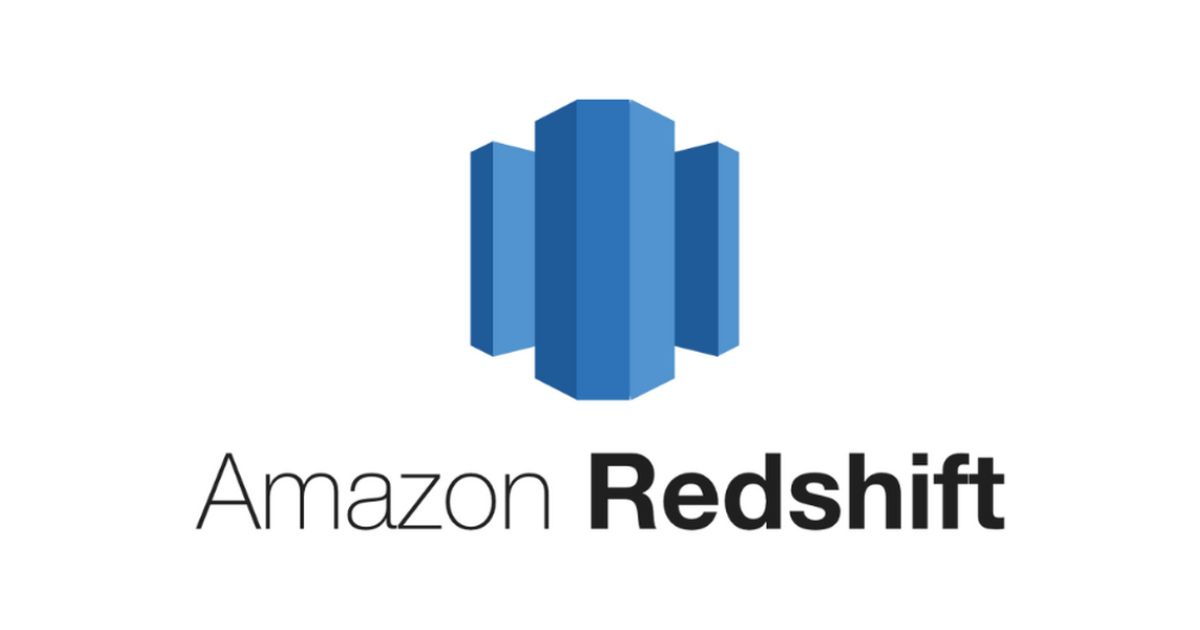
Amazon Redshift is a fully managed data warehousing service designed for big data analytics. Only with this service, you can run complex SQL queries across large datasets efficiently.
Question 33: How does Redshift benefit big data analytics?
Redshift benefit big data analytics:
Scalability: Easily scale from gigabytes to petabytes of data.
High Performance: Uses columnar storage and massively parallel processing (MPP) to speed up queries.
Cost-Effective: Optimized storage reduces costs, and you can choose on-demand or reserved pricing.
Integration: Seamlessly integrates with AWS services like S3, Glue, and QuickSight for data ingestion, transformation, and visualization.
Question 33: How do you configure and manage a cache database with ElastiCache?
To configure and manage a cache database with Amazon ElastiCache, follow these key steps:
Step 1 - Choose the Right Engine: Use Redis for advanced features like data persistence, pub/sub, and high availability. Opt for Memcached if you need simple, fast, and scalable caching.
Step 2 - Create an ElastiCache Cluster: In the AWS Management Console, select the engine (Redis or Memcached), configure node types, number of nodes, subnet groups, and security settings.
Step 3 - Configure Advanced Options:
For Redis, enable Multi-AZ replication, automatic failover, and sharding for scalability. Use parameter groups to adjust settings like eviction policies and memory usage.
Set up backups and persistence for data durability.
Step 4 - Security Configurations: Enable encryption at rest and in transit. Use IAM roles for access control and deploy within a VPC for network isolation.
Step 5 - Access and Monitoring:
Connect using the cluster endpoint and secure access with Redis Auth.
Monitor performance with CloudWatch and set up alerts for key metrics like CPU usage, memory, latency.
Step 6 - Scaling and Maintenance: Scale horizontally by adding more nodes or vertically by upgrading node types. Enable auto-patching and take manual snapshots before updates.
Question 34: What Is AWS Elastic Transcoder?
AWS Elastic Transcoder converts (or transcodes) media files (like videos) into different formats, sizes, and bitrates. So, your file has compatibility across various devices: smartphones, tablets, and web browsers. It automatically handles the complexities of video transcoding, such as adjusting resolution, changing formats, and optimizing for playback on different devices.
Question 35: When Would You Use AWS Elastic Transcoder?
When to Use AWS Elastic Transcoder:
Video On-Demand Services: If you have a platform that offers video streaming (e.g., e-learning, entertainment), Elastic Transcoder can convert your video files to formats supported by different devices.
Multi-Device Compatibility: When you need videos to play seamlessly on different devices (iOS, Android, desktops, etc.), Elastic Transcoder supports video work across all of them.
Automated Video Processing: It’s useful when you need to regularly convert videos (like user-generated content) without managing the infrastructure yourself. Elastic Transcoder scales automatically based on your workload.
Question 36: What is a VPC?
A VPC (Virtual Private Cloud) is a logically isolated section of the AWS Cloud. With VPC, you can launch and manage your resources (like EC2 instances, databases, and more) in a virtual network that you define. You also have complete control over network settings, like IP address ranges, subnets, route tables, and security groups.
Question 37:What is the difference between SNS and SQS?
SNS (Simple Notification Service) and SQS (Simple Queue Service) are messaging services offered by Amazon Web Services (AWS).
| Feature | SNS | SQS |
| Model | Publish-subscribe | Queue-based |
| Use cases | Notifications, alerts | Decoupling, offloading tasks |
| Messaging | Fan-out to multiple subscribers | FIFO queueing |
Question 38: What’s the difference between a Security Group and NACL in AWS?
Security Groups (SGs) and Network Access Control Lists (NACLs) are used for controlling traffic in AWS.
| Feature | Security Groups | Network ACLs |
| Level of Operation | Instance level (acts as a virtual firewall for EC2 instances) | Subnet level (controls traffic for entire subnets) |
| Statefulness | Stateful: Allows response traffic automatically for permitted inbound traffic | Stateless: Both inbound and outbound rules must be explicitly allowed for communication |
| Rules Supported | Only allow rules; no explicit deny rules | Allow and deny rules are both supported |
| Rule Evaluation | Rules are evaluated in aggregate (collectively) | Rules are evaluated in numerical order (lowest to highest) |
Question 39: What is Route 53, and how do you use it for DNS management?
Route 53 is a highly reliable, scalable, and cost-effective Domain Name System (DNS) service of Amazon Web Services (AWS). It translates human-readable domain names into machine-readable IP addresses. Users will access websites and applications by their domain names rather than their IP addresses.
Question 40: How do you use Route 53 for DNS management?
Use Route 53 for DNS management:
Create a Hosted Zone: A hosted zone represents a domain name that you want to manage using Route 53. Each hosted zone has its own DNS records.
Create DNS Records: Create various types of DNS records, such as A records (IPv4 addresses), AAAA records (IPv6 addresses), CNAME records (aliases), and MX records (mail exchangers).
Configure Routing Policies: Choose the routing policy for your DNS records, such as simple routing, weighted routing, failover routing, or latency-based routing.
Manage DNS Changes: Use the Route 53 console or API to make changes to your DNS records.
Monitor DNS Health: Use Route 53's health checks to monitor the health of your resources and automatically route traffic to healthy endpoints.
Question 41: How do VPN and Direct Connect differ?
VPN is an encrypted connection over the internet, while Direct Connect is a dedicated private line offering more reliable and faster connections.
| Feature | VPN | Direct Connect |
| Connection type | Software-based | Hardware-based |
| Flexibility | High | Lower |
| Cost | Generally lower | Generally higher |
| Bandwidth | Lower | Higher |
| Use cases | Smaller organizations, lower bandwidth | Large organizations, high-bandwidth requirements |
Question 42: What is MFA?
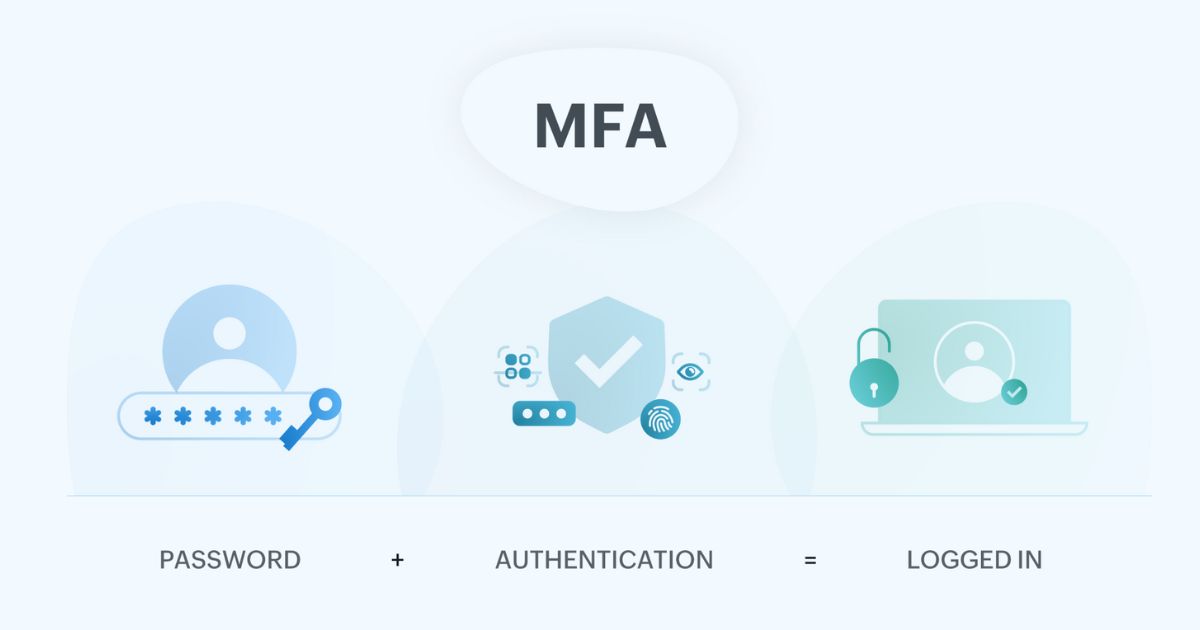
MFA (Multi-Factor Authentication) is a security feature that requires users to provide two or more authentication factors to access an account. Typically, it needs something the user knows (password) and something they have (a code from a mobile app or hardware device).
Question 43: Why should MFA be used in AWS?
Use MFA in AWS for:
Enhanced Security: MFA adds an extra layer of protection beyond just a username and password. Even if credentials are compromised, unauthorized access is prevented without the second authentication factor.
Secure Access to Critical Resources: Protect sensitive AWS resources and services, especially for IAM users and root accounts, as they access critical cloud infrastructure.
Compliance: Many security standards and compliance frameworks (like PCI DSS, HIPAA) require multi-factor authentication for accessing systems that handle sensitive data.
Question 44: Explain AWS Key Management Service (KMS).
AWS Key Management Service (KMS) integrates with many AWS services to offer a consistent method for encrypting data across your AWS environment. So, sensitive information is protected by controlling access to encryption keys. You don't need to manage the underlying infrastructure yourself.
Question 45: Can you explain serverless architecture?
Serverless architecture builds and runs applications without managing servers. The cloud provider automatically handles server provisioning, scaling, and maintenance. You only pay for the compute time you use, and it's ideal for event-driven applications and workloads with variable traffic.
Question 46: What is CloudFormation?
AWS CloudFormation is a service for defining and provisioning AWS infrastructure as code. You create templates in JSON or YAML that describe all the AWS resources you need (e.g., EC2 instances, S3 buckets, RDS databases), and CloudFormation automatically sets up, configures them.
Question 47: What is the difference between CloudFormation and Terraform?
CloudFormation and Terraform are Infrastructure as Code (IaC) tools:
| Feature | CloudFormation | Terraform |
| Vendor | AWS | Open-source |
| Template format | JSON or YAML | HCL |
| Supported providers | AWS | AWS, Azure, Google Cloud, and more |
| Community | AWS-specific | Large and active community |
Question 48: What is an Elastic Load Balancer?
An Elastic Load Balancer (ELB) automatically distributes incoming application traffic across multiple targets, like EC2 instances, containers, or IP addresses.
Question 49: What are Elastic Load Balancer’s types?
There are three main types of ELB:
Application Load Balancer (ALB): Works at the application layer (Layer 7) and is ideal for HTTP/HTTPS traffic. It supports advanced routing, SSL termination, and WebSockets.
Network Load Balancer (NLB): Operates at the transport layer (Layer 4) and is designed for high-performance, low-latency TCP/UDP traffic. It handles millions of requests per second.
Gateway Load Balancer (GWLB): Primarily for third-party virtual appliances. It provides scalable traffic distribution and inspection for security appliances.
Question 50: What is Infrastructure as Code (IaC) in AWS?
Infrastructure as Code (IaC) in AWS is a practice where infrastructure is managed and provisioned using code instead of manual processes. It is used for automated, repeatable, and consistent deployment of cloud resources.
Question 51: What Is AWS OpsWorks, And How Does It Work?
AWS OpsWorks is a configuration management service. This service automates server configurations, deployments, and maintenance using managed instances of Chef and Puppet. These are popular automation platforms that help define infrastructure as code, making it easier to manage complex server environments.
Don't forget that you can check out some of Skilltrans' courses. Please click on the course name below to learn more:
Learn animation using CSS3, Javascript and HTML5
You'll learn how to use CSS3 syntax to create quick and smooth animations without needing javascript. Next I'll show you the building blocks of animating in javascript using setInterval and requestAnimationFrame in the canvas. Then you will learn how to leverage jQuery's animation methods, events, and properties to get animating quickly. Last but not least we'll cover GSAP (Greensock animation platform) where you'll learn the basics all the way through complex sequenced animations.
LLM - Fine tune with custom data
If you're passionate about taking your machine learning skills to the next level, this course is tailor-made for you. Get ready to embark on a learning journey that will empower you to fine-tune language models with custom datasets, unlocking a realm of possibilities for innovation and creativity.
Boost SQL Server Database Performance with In-Memory OLTP
In this data-driven era, where speed and efficiency are paramount, In-Memory OLTP emerges as the hero. Join this course and equip yourself with the knowledge and skills to unleash the true power of SQL Server's In-Memory OLTP Engine. Let's embark on this transformative journey together and revolutionize the way you handle data. Enroll now and elevate your SQL Server expertise to new heights!
Conclusion
Mastering the Top 51 Must-Ask AWS Interview Questions and Detailed Answers equips you with a solid foundation to excel in AWS-related interviews. If you want to learn more about AWS, you can sign up for Skilltrans courses. Always update the best, most accurate information with preferential prices is what our courses bring to you.

Meet Hoang Duyen, an experienced SEO Specialist with a proven track record in driving organic growth and boosting online visibility. She has honed her skills in keyword research, on-page optimization, and technical SEO. Her expertise lies in crafting data-driven strategies that not only improve search engine rankings but also deliver tangible results for businesses.



